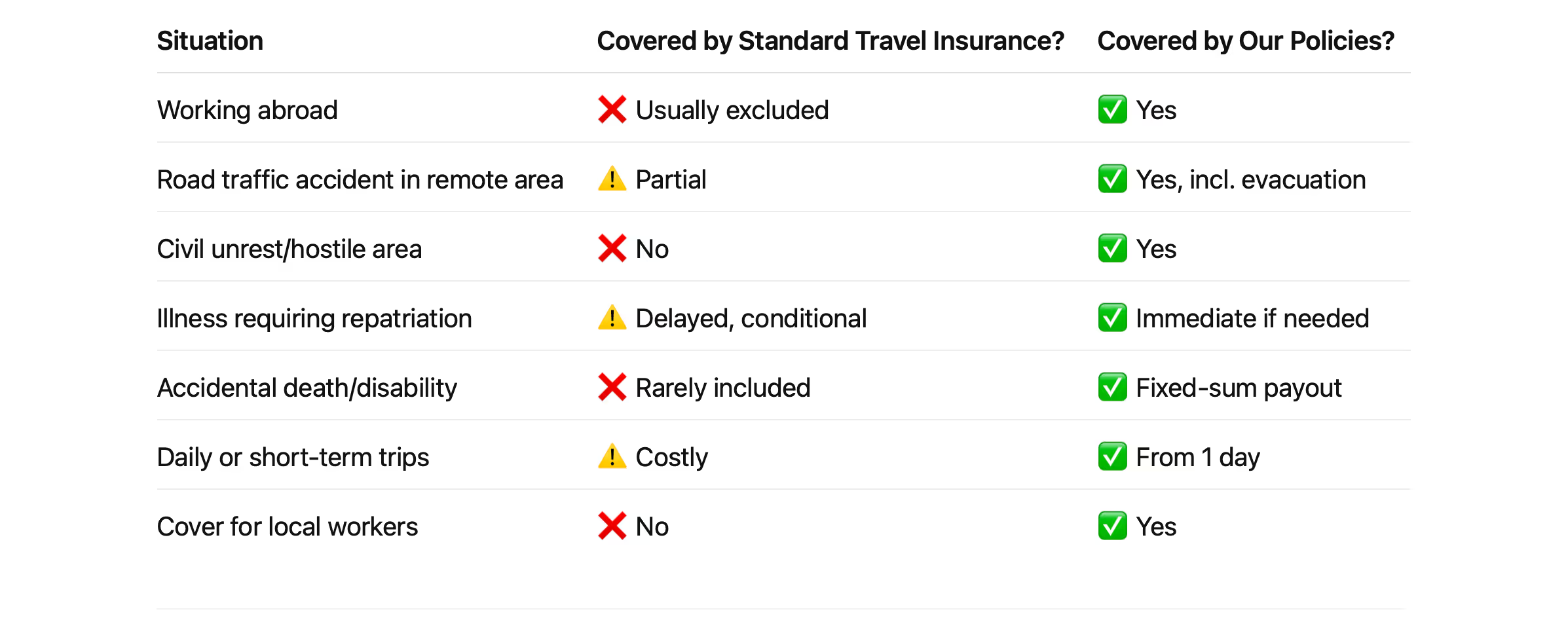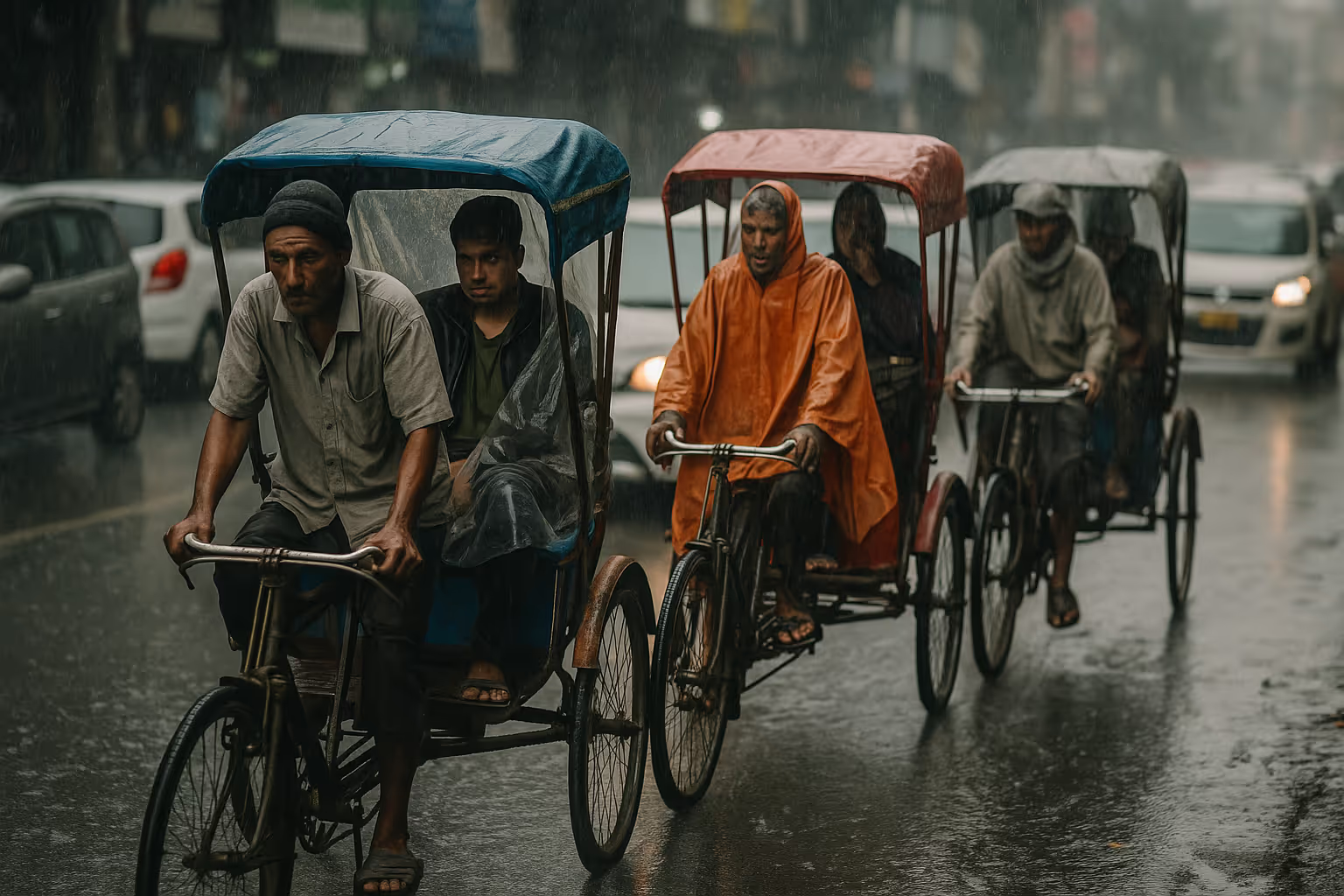How to Choose the Right Insurance for Overseas Work

If you’re heading abroad for work — whether it’s a short consultancy, a long-term post, or fieldwork in a remote location — choosing the right insurance isn’t just a box to tick. It can determine how quickly you get help, whether you’re covered for real risks, and how smoothly emergencies are handled.
This guide helps you choose the right insurance policy based on:
- What kind of work you’re doing
- Where you’re going
- Who’s responsible for the cover (you or your organisation)
- What cover is actually included
Why Standard Travel Insurance Might Not Be Enough
Travel insurance is built for tourists. It usually covers trip delays, lost baggage, or illness while sightseeing.
But if you’re:
- Working in-country (even in an office)
- Operating in high-risk or remote areas
- Supporting a humanitarian response
- Deployed by a company or NGO
- …standard policies likely won’t cover what you need — or may exclude you altogether.
✅ See how our Individual Overseas Cover works
First: Who’s Being Insured?
Your choice starts with who needs cover. This affects policy type, documentation, and claims support.
1. Solo Worker or Freelancer
You’re self-employed or travelling alone. You’ll need:
- Your own policy
- Clear certificate of insurance
- Fast claims support and remote access
✅ Go for our Insurance for Individuals – from 3 days up to 52 weeks.
2. Group or Organisation
You’re an employer, NGO, or consultancy responsible for a team. You’ll need:
- Cover that matches staff roles and locations
- Group documentation
- Simple admin (especially for short contracts)
✅ Our Group Personal Accident policy offers flexible daily cover for international or local staff.
3. Locally Employed Workers
These are national staff working in their home country — often excluded from standard employer cover.
You’ll need:
- Dedicated local staff cover
- Accidental death, permanent disability
- No travel element required
✅ Choose Insurance for Everyone (local workers) — from $11 per day, with no deductible.
Second: Where Are You Going?
Countries are categorised by risk level — which affects the type of cover you’ll need.
Zones usually include:
- Low risk (e.g. France, Canada, Japan)
- Medium risk (e.g. Colombia, India, South Africa)
- High risk (e.g. Iraq, Haiti, Sudan)
- Extreme (e.g. parts of Syria, Gaza, or active conflict areas)
✅ We cover all zones — including conflict regions — with no hidden charges.
✅ If you’re insured for “Extreme” you’re also covered in all lower zones.
Check your destination here:
Third: What Risks Do You Face?
Now think about what could actually go wrong — and whether your policy covers it.

Fourth: How Long Do You Need Cover?
Length matters — especially when planning cost and administration.
Short Assignments
✔ From 3 days to 52 weeks
✔ Can be extended mid-trip
✔ Ideal for researchers, consultants, volunteers
✅ Our short-term policies are designed for field work and project support
Long-Term Deployment
✔ Cover up to 12 months
✔ Available as rolling schemes
✔ Works well for country staff and core team members
✅ We can support annual declarations or automatic renewal setups for employers
What Does “Good” Insurance Include?
Look for policies that cover:
- ✅ Accidental death & permanent disability
- ✅ Medical expenses (sickness or injury)
- ✅ Evacuation from the point of incident
- ✅ Emergency repatriation
- ✅ Cover in conflict and hostile zones
- ✅ Local and international staff
- ✅ 24/7 global support — with real case management
That’s what ours includes.
Common Mistakes to Avoid
❌ Assuming your employer has covered you (check your certificate)
❌ Buying travel insurance for professional work
❌ Thinking repatriation starts from the hospital — it usually doesn’t
❌ Forgetting to cover local staff
❌ Not checking which “zones” your country falls into
Summary: How to Choose the Right Cover
- Know who you’re insuring (individual, group, or local team)
- Confirm where they’re going and what risk level applies
- Understand what’s covered — evacuation, disability, etc.
- Choose the right length of policy for your assignment
- Don’t assume standard travel insurance is enough
What To Do Next



